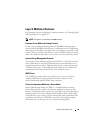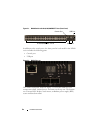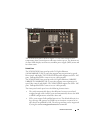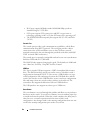
90 Switch Feature Overview
Protocol Independent Multicast—Sparse Mode
Protocol Independent Multicast-Sparse Mode (PIM-SM) is used to efficiently
route multicast traffic to multicast groups that may span wide area networks,
and where bandwidth is a constraint. PIM-SM uses shared trees by default
and implements source-based trees for efficiency. This data threshold rate is
used to toggle between trees.
Protocol Independent Multicast—Source Specific Multicast
Protocol Independent Multicast—Source Specific Multicast (PIM-SSM) is a
subset of PIM-SM and is used for one-to-many multicast routing
applications, such as audio or video broadcasts. PIM-SSM does not use shared
trees.
Protocol Independent Multicast IPv6 Support
PIM-DM and PIM-SM support IPv6 routes.
MLD/MLDv2 (RFC2710/RFC3810)
MLD is used by IPv6 systems (listeners and routers) to report their IP
multicast addresses memberships to any neighboring multicast routers. The
implementation of MLD v2 is backward compatible with MLD v1.
MLD protocol enables the IPv6 router to discover the presence of multicast
listeners, the nodes that want to receive the multicast data packets, on its
directly attached interfaces. The protocol specifically discovers which
multicast addresses are of interest to its neighboring nodes and provides this
information to the multicast routing protocol that make the decision on the
flow of the multicast data packets.


















